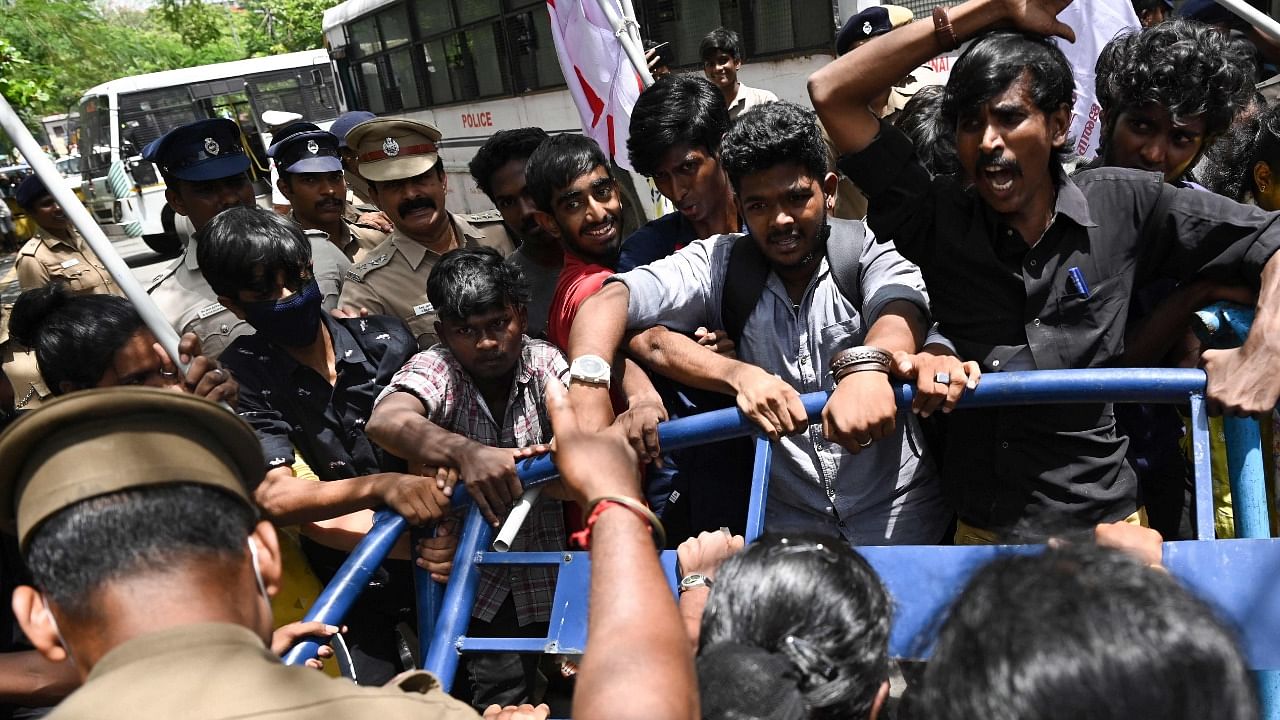
After announcing the creation of 10 lakh jobs before the 2024 Lok Sabha polls, the top government echelons must have expected people to enthusiastically receive the imminent appointment of 46,000 young men as Agniveers. The reaction they were confronted with—widespread violent protests, arson, and even death—caught them unawares.
The events of the last week lay bare the deepening divide between India and Bharat. The government leadership, when they reduced the age ceiling for joining the force from 26 to 21, were perhaps ignorant of the fact that while a part of India, the topmost few, is shining, the traditional Bharat finds itself in misery.
The despairing condition of most Indians can be attributed partially to the pandemic. But we must keep in mind that the growth rate slipped below four per cent in the last pre-pandemic normal year of 2019-20, which means the poor have suffered the malaise for quite a few years.
Many in rural areas have fallen back into abject poverty. For example, families have returned to using firewood for cooking six years after the launch of the much-touted Ujjwala Yojna. These families can no longer afford cooking gas cylinders. After realising the price is hampering the social and environmental cause, the Union government recently subsidised every Ujjwala cylinder by Rs 200.
Also Read: Agnipath: Risking national security
But this is merely the tip of the iceberg. Poorer households cannot even buy kerosene (that shot up to about Rs 80 per litre before the recent tax cut) to light lamps during power cuts. With prices of food items soaring, these families are trying to cope by collecting food from natural sources to compensate for the loss of ability to buy from the market.
One could wonder if these are a small percentage of the population. For such doubters, here is some data provided by the latest State of Inequality in India Report published by the Economic Advisory Council to the Prime Minister: An Indian earning Rs three lakh a year, or Rs 25,000 per month, belongs to the top 10 percentile of the population.
Even if we take this top 10 per cent as inhabitants of shining India, the rest, 90 per cent, are the residents of the traditional Bharat, suffering the maximum brunt of the 4.2 per cent unemployment rate and low income from jobs. According to the Labour Force Survey, the earnings of the top 10 per cent almost equal the earnings of the bottom 64 per cent. Again, while the upper 50 per cent take away 78 per cent of the total wage paid to the workforce, the share of the bottom 50 per cent is only 22 per cent.
Another point to be noted is that among the workforce, according to the World Inequality Report, 45.78 per cent are self-employed, and 20.71 per cent are casual workers. Altogether, these 66.49 per cent of the workforce has suffered the most in the last two years. As per the Global Hunger Index 2021, India now ranks 101 among 116 countries and belongs to the ‘serious’ hunger category.
Such gloom impacts the residents of Bharat’s physical and mental health. The top elite of India, the bureaucrats and the politicians are unaware of this psychological condition of the people of Bharat. That was why they had no inkling of the potential fallout of reducing the age ceiling for joining the force from 26 to 21. Further, they felt an offer of 46,000 young men being recruited, out of whom 25 per cent will be confirmed in the Army and the rest exit with Rs 12 lakhs after four years, will be lapped up by the youth.
The elite thought so as they were unaware that an unprecedented uncertainty factor was impacting the psychological makeup of the young generation. It is a product of the inhuman treatment the poor got in recent times (remember how insensitively the trains and buses were stopped suddenly, stranding lakhs of migrants during the first lockdown), the wide-scale retrenchment in the informal sector, and the long pause in new recruitments.
It is not that the Union and the state governments have not tried to protect the poor from hunger during the pandemic. They did. But the absence of a social security net, in the form of minimum pragmatic support to the families not earning the sustenance, intensified the uncertainty factor.
Inequality is rising, deepening the divide between India and Bharat. The symptoms are out there in the open for all to see. The Agniveer agitation, though condemnable for the violence it indulged in, was an expression of this deep-rooted malaise of our present-day society.
(Diptendra Raychaudhuri is a journalist and author based in Kolkata)
Disclaimer: The views expressed above are the author's own. They do not necessarily reflect the views of DH.